|
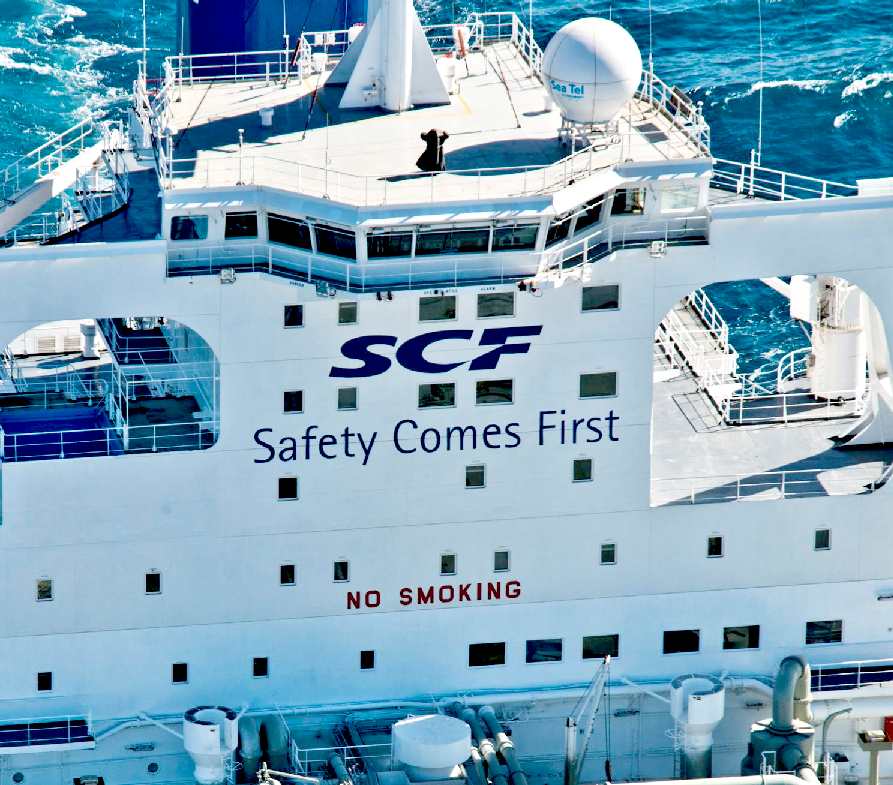
ROTTERDAM
MAY 1 2014
The
Mikhail Ulyanov, an ice-breaking shuttle tanker (ice class – ARC6) belonging to OAO Sovcomflot (SCF Group), has been the subject of a Greenpeace protest, while at the Port of Rotterdam carrying a cargo of 67,000 tons of crude oil, loaded on the continental shelf of the Pechora Sea, Russia.
The Tanker Mikhail Ulyanov is an Arctic shuttle tanker was designed to transport oil by sea from Russian offshore oil fields and built in Russia. The ship was built in accordance with the Rules of Dual Registry of the Russian Registry of Shipping and Lloyd’s Register.
“Sovcomflot’s fleet is routinely surveyed by Lloyd’s Register (LR) and other members of the International Association of Classification Societies,” said Richard Sadler, Chief Executive Officer of Lloyd’s Register Group. “This helps ensure that the fleet carries the necessary high standards of regulatory environmental and safety certification enabling international trading. Lloyds Register, which certifies the majority of the fleet, additionally certifies Sovcomflot to ISO quality standards including environmental protection and energy management.”
The vessel measures 257 x 34 x 14 m and is a double acting ice-breaker.
She is fitted with twin Azipod propulsion units (an electric propeller-ruder system with a 360 degree turning circle), a dynamic positioning system (DP), heli-deck and a bow loading facility adapted for Arctic operations.
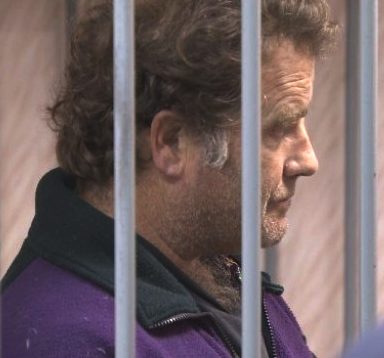
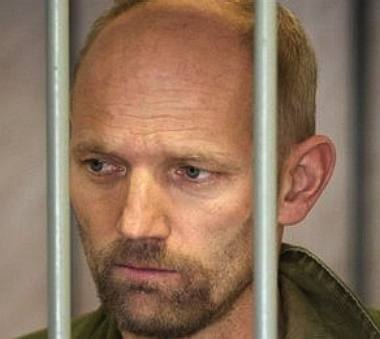
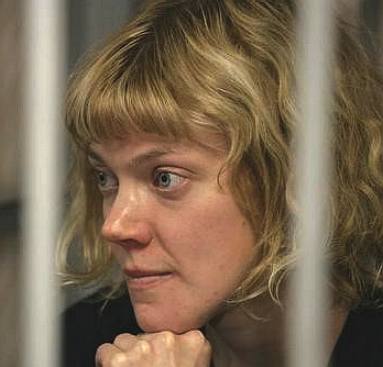
Peter
Willcox, Frank Hewetson and Sini Saarela behind bars for their (our)
beliefs
AMSTERDAM
15 OCTOBER 2013
Greenpeace International activist Frank Hewetson (UK) has been refused bail by the Regional Court of Murmansk in Russia, bringing the number of rejected bail appeals to 10.
Activist Marco Weber (Switzerland) also appeared in court today, but his appeal hearing was postponed until October 21 due to the lack of a German language translator. Italian crew member Cristian D'Alessandro will appear in court later today for his bail hearing and more appeals will be held later this week.
Nina Gold, wife of detainee Frank Hewetson, said:
“Frank has now spent three weeks locked up thousands of miles away from his family. He is accused of an absurd crime which clearly none of the Arctic 30 are guilty of committing. The only thing he is guilty of is participating in an entirely peaceful protest to raise awareness of a cause that he passionately believes in - protecting the planet and the fragile wilderness of the Arctic. He has two teenage children back home who miss him terribly, and not knowing when we’ll be able to see him again is agony.”
In court today, Hewetson said Greenpeace has a record of 40 years of peaceful protests and the allegation that the organisation committed piracy is “absurd”. He asked the judge to order all 30 detainees to be released so that Greenpeace can “better protect the environment”.
In an earlier letter, Hewetson also said he remains in good spirits and is adapting to the “daily grind” of prison life “where the merest opening of the peep hole from the outside causes a ripple of excitement from within”.
Frank, who is being kept in a poorly-lit cell with a chain-smoking Russian inmate, writes further: “(If) I walk round the flooded 5m x 5m concrete pen 80 times it's the equivalent of walking [from home] to Queen's Park,” which is Frank's local tube rail station in London. He's been given a phrasebook and a chess set, which he says “will be a real bonus”.
In other developments, Greenpeace International Executive Director Kumi Naidoo was meeting today with Finnish Foreign Minister Erkki Tuomioja to discuss the situation around the Arctic 30 detainees, one of whom, Sini Saarela, is Finnish.
On Friday, October 18, to mark 30 days of detention - “30 days of injustice” - for the Arctic 30, Greenpeace will hold Solidarity Actions across the globe together with partner NGOs, celebrities and supporters.
And in a colourful show of solidarity, Brazilian artist Eduardo Kobra has painted a mural in Moscow calling for the release of Brazilian activist Ana Paula Alminhana Maciel.
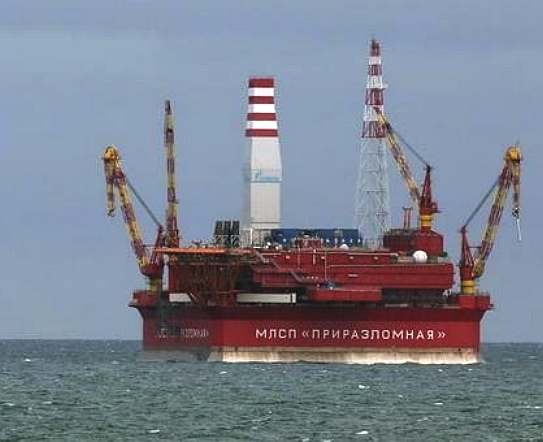
GAZPROM
& SEA ICE DEPLETION
The North Pole without sea ice is a chilling thought. Sea ice is a fundamental part of the Arctic ecosystem; it is not only a vital habitat for animals such as polar bears and seabirds that live above it, but it is also essential for marine organisms that thrive below the ice.
Sea ice is also a crucial part of the global climate because its white surface affects the amount of solar radiation that is reflected or absorbed. In other words, it is the planet’s air-conditioning system.
Scientists already know that Arctic ice floes are melting faster and more extensively than they used to, but there are still big gaps in our knowledge about exactly how that process happens.
That is why a group of researchers on board the Greenpeace ship Arctic Sunrise are using cutting-edge technologies to scan the 3D profile of ice floes this month. The researchers are led by leading sea ice scientist Professor Peter Wadhams from the University of Cambridge. This is the first time that scientists, scanning experts and engineers have worked together to capture the true shape of the Arctic sea ice with such accuracy.
Sailing to the Fram Strait, between Svalbard and Greenland, they will use an autonomous underwater vehicle (AUV) to measure the underside of the ice and surface laser scanners to measure its top.
“This will enable us to essentially 'take the ice home with us'," Wadhams said. “It also provides us with a way to study the characteristics of these floes and ridges in the safe confines of our labs – without having to deal with extreme temperatures or worry about roaming polar bears.”
Gazprom is Russia's biggest company and is almost totally stateowned providing nearly 10 percent of Russia's entire gross domestic product. In April, Gazprom announced a partnership with Shell to drill in the Arctic meaning Shells' shareholders just signed up for the inevitable cost of an epic Arctic oil spill.
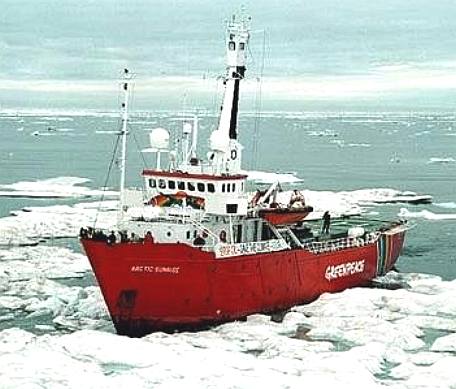
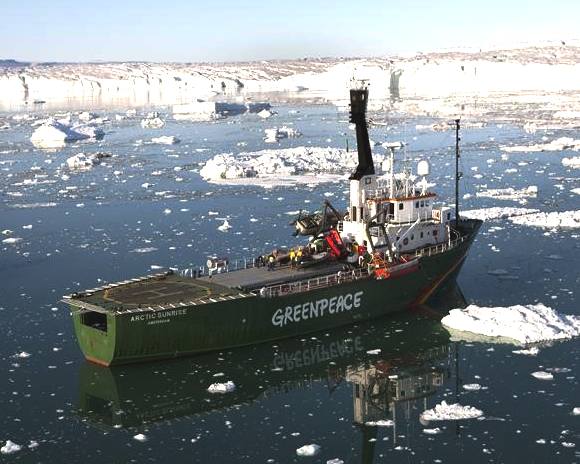
NINE REASONS FOR ARCTIC SPILL INEVITABILITY
9. Gazprom's oil platofrm, the Prirazlomnaya, is hardly the pinnacle of engineering. The company constructed it using pieces of decommissioned North Sea rigs and sat rusting in a Murmansk shipyard for years.
8. Gazprom's platform will operate year-round in the remote Pechora Sea, where ice is present for nearly two-thirds of the year and temperatures can drop as low as -50°C.
7. Much of the response equipment will live 1000 kilometers away in Murmansk, meaning the company would not be able to mount a serious accident response for days.
6. Gazprom was supposed to start producing oil from the Arctic in 2011, but due to the enormous technical challenges posed by drilling in the region and leaks about concerns with safety, the company delayed the project.
5. When Gazprom finally put Prirazlomnaya in place for drilling in the Barents Sea in 2011, subcontractors working on its construction were quoted in the press as declaring it "94.2 percent ready for use." However an anonymous source involved in the construction told Nord-News agency that in reality the platform was no more than 50 percent ready. Gazprom refused to publish any of the platform's safety documentation, its environmental impact assessment or the oil spill response plan for the project.
4. Just weeks after being positioned on site, the Prirazlomnaya's rig safety ladder was torn off in a summer storm and a new video shows what appears to be a safety vessel crashing into the platform. Industry sources now suggest that the platform may not meet Russian offshore operating standards yet Gazprom has started exploratory drilling regardless.
3. In December 2011, 53 people died when the Kolskaya jack-up rig capsized during towing. Before this incident, a unit of Gazprom used the rig at a gas production site and had regularly applied cuts in budget and security measures.
2. Gazprom claims it "pays great attention to preventive environmental protection measures, but according to official plans its worst-case scenario is only for an oil spill of around 10,000 tons or 73,000 barrels. The Deepwater Horizon disaster spewed nearly 5 million barrels into the Gulf of Mexico while the Prirazlomnaya itself can store up to 650,000 barrels of oil.
1. National parks and wildlife sanctuaries like Nenetsky and Vaygach surround the Prirazlomnoye oil field, home to protected and endangered species such as the Atlantic walrus and polar bears. Gazprom's summary oil spill response plan suggests an oil spill would not only impact wildlife habitats, but also Indigenous Peoples who rely on the Pechora Sea for fishing and hunting.
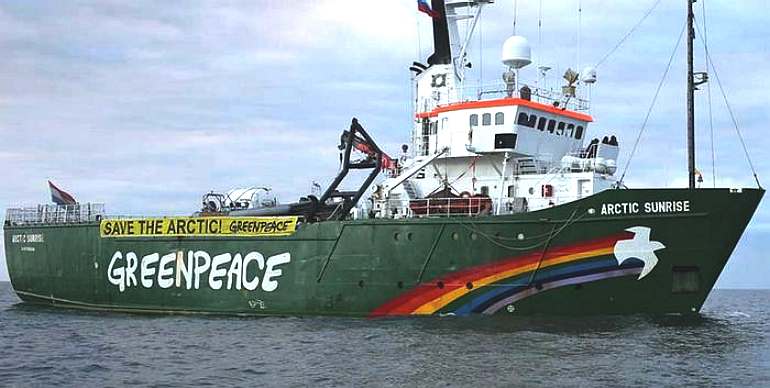
BRAZIL 14 OCTOBER 2013
Artista brasileiro faz mural em Moscou em defesa de ativista do Greenpeace presa
O artista brasileiro Eduardo Kobra deixou um mural pintado na cidade russa pedindo a libertação da ativista brasileira Ana Paula Maciel, do Greenpeace, detida na Rússia desde 19 de setembro.
Kobra viajou a Moscou a convite da prefeitura da cidade para realizar o painel "A Bailarina", homenagem a Maya Plisetskaya, um dos principais nomes do balé russo. A obra foi entregue na última sexta-feira, dia 11.
Sem convite e sem autorização, o artista também deixou na cidade o mural "Ana", no bairro de Mendeleevskaya, no qual um urso polar ergue uma placa em que está escrito "Free Ana" (Libertem Ana).
Ana Paula está entre os 30 ativistas presos no dia 19 em protesto no Ártico contra a estatal russa de gás e petróleo Gazprom. O grupo teve sua prisão preventiva decretada por dois meses até o fim das investigações.
AMSTERDAM 11 OCTOBER 2013
Appeals for bail by lawyers for Phil Ball and Kieron Bryan, both British citizens, were today refused by the Regional Court of Murmansk.
Phil Ball is one of 28 Greenpeace International activists who were arrested by Russian special forces after a peaceful protest at an Arctic oil rig operated by Gazprom. Kieron Bryan is a freelance videographer who was contracted by Greenpeace International to document the protest.
Three activists and a Russian freelance photographer were refused bail earlier in the week. Further bail applications on behalf of the other activists will be heard next week.
The International Federation of Journalists and the European Federation of Journalists have today called for the immediate release of Kieron Bryan and Phil Ball (a registered journalist and activist) as well as the freelance Russian photographer Denis Sinyakov.
The head of the Kremlin's Human Rights Council, Mikhail Fedotov, has also said the Greenpeace International activists cannot be charged with piracy as they did not have an intention to seize the oil rig. He has also said the council will appeal to the general prosecutor to change the decision.
On Thursday Brazilian President Dilma Rousseff ordered her top diplomat to probe Russia over the fate of Brazilian Greenpeace activist Ana Paula Maciel. President Dilma said the Foreign Ministry was determined to provide "any assistance" to Ana Paula Maciel.
"I asked Foreign Minister Luiz Alberto Figueiredo to make high-level contact with the Russian government to find a solution for Ana Paula," Rousseff wrote on Twitter.
Commenting on the latest developments in the case, Greenpeace International executive director Kumi Naidoo said:
“Those 30 brave men and women are in jail on trumped up charges, they are prisoners of conscience. They are there not because of what they did but because of what they represent. They are there not because of Russian law but because they made a stand against vested interests. Greenpeace does not think it is above the law, but those campaigners are not pirates, even President Putin says so, and every day they remain behind bars is an affront to the basic principles of justice.”
BBC NEWS 9 OCTOBER 2013
"During a search of the ship, drugs (apparently poppy straw and morphine) were confiscated," Russia's Investigative Committee said.
Poppy straw, or raw opium, can be used to produce morphine or heroin. Greenpeace said in a statement that any suggestion of illegal drugs being found was a "smear".
"We can only assume the Russian authorities are referring to the medical supplies that our ships are obliged to carry under maritime law," it said.
The head of Greenpeace International, Kumi Naidoo, has written to Russian President Vladimir Putin, offering himself as a guarantee for the detainees.
There is widespread international concern for the crew of the Arctic Sunrise, who hail from 18 nations.
The Netherlands has demanded the immediate release of the detainees, who are being held in the northern port of Murmansk pending trial, as well as the release of their the Dutch-flagged ship.
Six Britons are among those arrested, and UK Foreign Office officials have discussed the case with Russia's ambassador in the UK, it was reported on Wednesday.
'Charges may change'
In its statement, the Investigative Committee said charges against some of the detainees might change in the light of evidence gathered from the ship.
Apart from the suspected drugs, "dual-purpose" equipment was found on the Arctic Sunrise, it said, adding that this "could be used not only for ecological purposes".
Investigators would seek to determine who among the detainees was responsible for "deliberately ramming" Russian border guard boats, endangering their lives, it said.
Greenpeace replied: "There is a strict policy against recreational drugs on board Greenpeace ships, and any claim that something other than medical supplies were found should be regarded with great suspicion.
"Before leaving Norway for the Russian Arctic, the ship was searched with a sniffer dog by the Norwegian authorities, as is standard. The laws in Norway are amongst the strictest in the world, and nothing was found because nothing illegal was on the ship."
"Any claim that illegal drugs were found is a smear, it's a fabrication, pure and simple," Greenpeace said.
The organisation went on to dismiss the allegation of ramming as a "fantasy".
'Bogus' claim
In a statement, it released a slow-motion video of its launch and the coast guard boats to show the moment they had touched.
"The Greenpeace boat sails towards the middle of the port side of the security forces boat and then only briefly touches it with the nose, immediately turning away and making a 180° turn to the left," Greenpeace said.
"The film clearly demonstrates that the official claims are entirely bogus."
In his letter, Mr Naidoo wrote: "I would offer myself as a guarantor for the good conduct of the Greenpeace activists, were they to be released on bail."
Speaking from Amsterdam, he told BBC News: "We are trying everything that's available to us and that's why we have taken this gesture in the hope that at least they will be granted bail, even if they have to stay in Russia for the court case itself."
In his native South Africa in the 1980s, Mr Naidoo campaigned against apartheid and was arrested on several occasions.
JUDE
LAW
Actor Jude Law is a supporter of Greenpeace and knows one of the detained men, logistics co-ordinator Frank Hewetson. He spoke to the BBC's Sarah Campbell at a protest outside the Russian embassy in London.
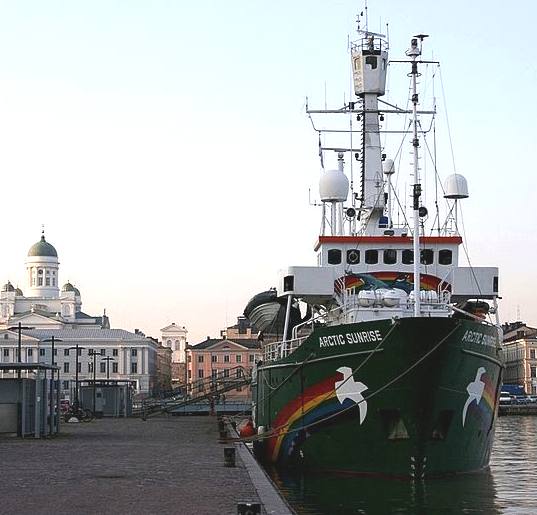
ARCTIC
SUNRISE
The Greenpeace vessel Arctic Sunrise was launched in 1975 as the Norwegian sealing vessel Polarbjørn (Polar Bear). With dimensions of 162 feet (length), 37 feet (beam), 17 feet (draft), and 497 GT (gross tonnage), it has a maximum speed of 13 knots.
The
MY Arctic Sunrise is a research vessel strengthened for
navigation in ice and operated by Greenpeace.
The vessel was built in 1975 and has a gross tonnage of 949 tonnes, a
length of 50 m and a maximum speed of 13 knots (24 km/h). Under the
original name of Polarbjørn ("polar bear"), she was used
as a sealing
ship, until chartered by environmental protection organization Greenpeace
in 1995.
While Greenpeace refers to the Arctic Sunrise as a research icebreaker, it is registered with the Government of the Netherlands as a sea-going motor yacht, thus avoiding certain technicalities. It has berthing space for up to 28 persons.
The ship has been used in a number of high-visibility environmental and ecological protests, some endangering navigation. In January 2006, it and the Japanese whaling vessel Nisshin Maru collided in Antarctic waters, with both suffering minor damage. In February 2007, it took part in a blockade of the Royal Navy base near Edinburgh.
In August 2007, activists from the ship boarded the bulk carrier Algomarine in the Great Lakes preventing it from delivering coal to a power plant until the Canadian Coast Guard removed them. On the same voyage, it blockaded a freighter from getting underway on the Saguenay River with a cargo of wood pulp derived from logging in Canada’s boreal forests.
Despite the lack of government approval, Arctic Sunrise most recently entered Russian waters of the Barents Sea and protesters attempted to board the oil and gas platform Prirazlomnaya. A Russian Border Guard vessel fired a warning shot over the bow of the Arctic Sunrise after it refused to heave to. The Greenpeace vessel and its personnel are now under detention and federal criminal charges of piracy have been initiated.
Piracy carries a maximum penalty of 15 years of imprisonment, although
Russian President Vladimir Putin has said the activists are obviously
"not pirates", it is uncertain how the state will play their
hand - considering that oil exploration/drilling is a money making
enterprise and money makes decent men do things they otherwise might
not.
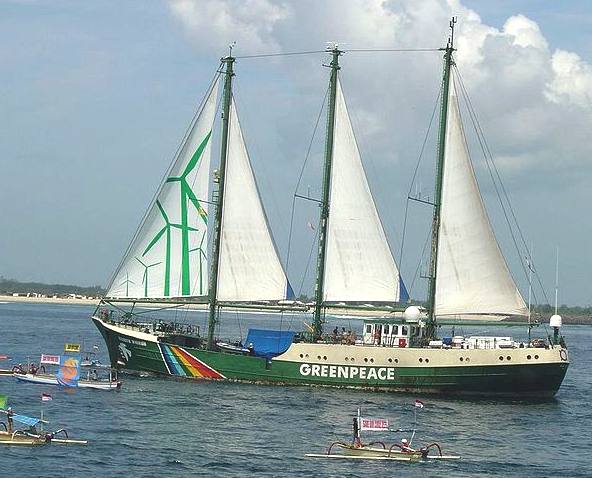
GREENPEACE
AMSTERDAM
Greenpeace is a non-governmental environmental organization with offices in over forty countries and with an international coordinating body in Amsterdam, the Netherlands. Greenpeace states its goal is to "ensure the ability of the Earth to nurture life in all its diversity" and focuses its campaigning on world wide issues such as global warming, deforestation, overfishing, commercial whaling, genetic engineering, and anti-nuclear issues. Greenpeace uses direct action, lobbying and research to achieve its goals. The global organization does not accept funding from governments, corporations or political parties, relying on 2.9 million individual supporters and foundation grants. Greenpeace has a general consultative status with the United Nations Economic and Social Council and is a founding member of the INGO Accountability Charter; an international non-governmental organization that intends to foster accountability and transparency of non-governmental organizations.
Greenpeace evolved from the peace movement and anti-nuclear protests in Vancouver, British Columbia, in the late 1960s and early 1970s. On September 15, 1971, the newly founded Don't Make a Wave Committee sent a chartered ship, Phyllis Cormack, renamed Greenpeace for the protest, from Vancouver to oppose United States testing of nuclear devices in Amchitka, Alaska. The Don't Make a Wave Committee subsequently adopted the name Greenpeace.
In a few years, Greenpeace spread to several countries and started to campaign on other environmental issues such as
commercial whaling and toxic waste. In the late 1970s, the different regional Greenpeace groups formed Greenpeace International to oversee the goals and operations of the regional organizations globally. Greenpeace received international attention during the 1980s when the French intelligence agency bombed the Rainbow Warrior in Auckland's Waitemata Harbour, one of the most well-known vessels operated by Greenpeace, killing one individual. In the following years, Greenpeace evolved into one of the largest environmental organizations in the world.
Greenpeace is known for its direct actions and has been described as the most visible environmental organization in the world. Greenpeace has raised environmental issues to public knowledge, and influenced both the private and the public sector. Greenpeace has also been a source of controversy; its motives and methods have received criticism and the organization's direct actions have sparked legal actions against Greenpeace activists.
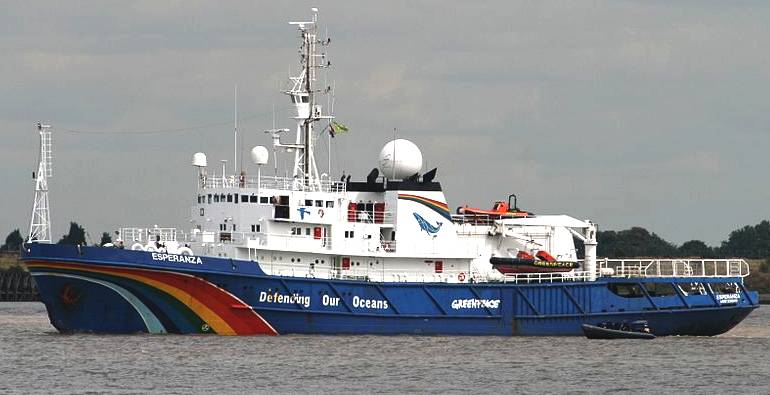
GREENPEACE ORIGINS
In the late 1960s, the U.S. had plans for an underground nuclear weapon test in the tectonically unstable island of Amchitka in Alaska. Because of the 1964 Alaska earthquake, the plans raised some concerns of the test triggering earthquakes and causing a tsunami. A 1969 demonstration of 7,000 people blocked a major U.S.-Canadian border crossing in British Columbia, carrying signs reading "Don't Make A Wave. It's Your Fault If Our Fault Goes". The protests did not stop the U.S. from detonating the bomb.
While no earthquake or tsunami followed the test, the opposition grew when the U.S. announced they would detonate a bomb five times more powerful than the first one. Among the opposers were Jim Bohlen, a veteran who had served the U.S. Navy, Irving Stowe and Dorothy Stowe, who had recently become Quakers. As members of the Sierra Club Canada, they were frustrated by the lack of action by the
organization. From Irving Stowe, Jim Bohlen learned of a form of passive resistance, "bearing witness", where objectionable activity is protested simply by mere presence. Jim Bohlen's wife Marie came up with the idea to sail to Amchitka, inspired by the anti-nuclear voyages of Albert Bigelow in 1958. The idea ended up in the press and was linked to The Sierra Club. The Sierra Club did not like this connection and in 1970 The Don't Make a Wave Committee was established for the protest. Early meetings were held in the Shaughnessy home of Robert Hunter and his wife Bobbi Hunter. Subsequently the Stowe home at 2775 Courtenay St. became the HQ. As Rex Weyler put it in his chronology, Greenpeace, in 1969, Irving and Dorothy Stowe's "quiet home on Courtenay Street would soon become a hub of monumental, global significance". Some of the first Greenpeace meetings were held there, and it served as the first office of the Greenpeace Foundation.[citation needed] The first office was opened in a backroom, storefront on Cypress and West Broadway SE corner in Kitsilano, Vancouver.
Irving Stowe arranged a benefit concert (supported by Joan Baez) that took place on October 16, 1970 at the Pacific Coliseum in Vancouver. The concert created the financial basis for the first Greenpeace campaign. Amchitka, the 1970 concert that launched Greenpeace has been published by Greenpeace in November 2009 on CD and is also available as mp3 download via the Amchitka concert website. Using the money raised with the concert, the Don't Make a Wave Committee chartered a ship, the Phyllis Cormack owned and sailed by John Cormack. The ship was renamed Greenpeace for the protest after a term coined by activist Bill Darnell.
In the fall of 1971 the ship sailed towards Amchitka and faced the U.S. Coast Guard ship Confidence which forced the activists to turn back. Because of this and the increasingly bad weather the crew decided to return to Canada only to find out that the news about their journey and reported support from the crew of the Confidence had generated sympathy for their protest. After this Greenpeace tried to navigate to the test site with other vessels, until the U.S. detonated the bomb. The nuclear test was criticized and the U.S. decided not to continue with their test plans at Amchitka.
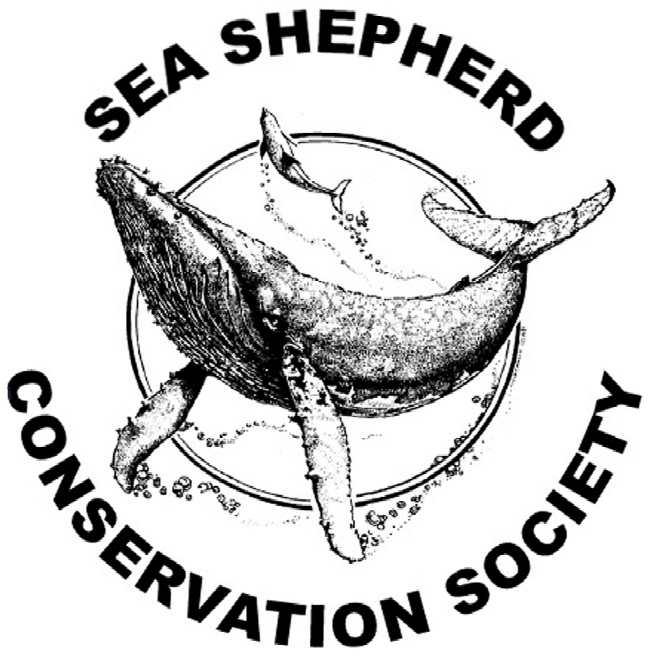
Competitor
conservationists Sea Shepherd
CONTACTS
Greenpeace International press desk: +31 20 718 24 70 or pressdesk.int@greenpeace.org
Video and photos:
Greenpeace International will provide photo and video of the appeals
hearings:
Greenpeace International picture desk: +31 20 718 24 71
Greenpeace International video desk: +31 20 718 24 72
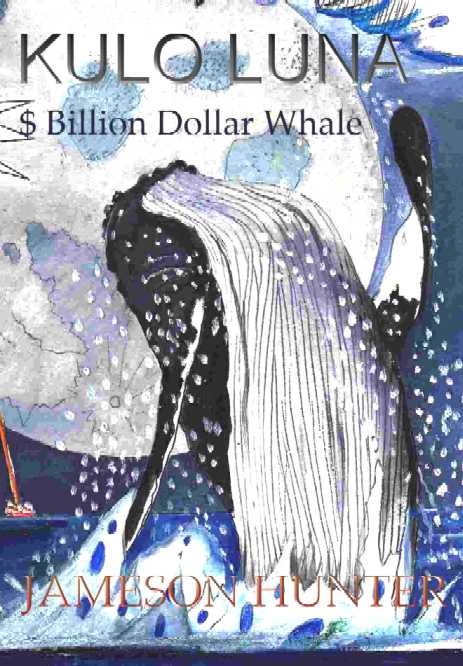
Worth
fighting for: Safety from barbarity for whales
LINKS
& REFERENCE
PLASTIC
OCEANS
http://www.marinetechnologynews.com/news/greenpeace-targets-russian-tanker-491256
greenpeace-targets-russian-tanker
http://en.wikipedia.org/wiki/Irving_Stowe
http://jennifermarohasy.com/2006/01/greenpeace-the-japanese-who-rammed-who/
http://www.greenpeace.org/international/en/news/features/Whats-happening-on-Arctic-Sunrise/
http://ruptly.tv/vod/view/4326/russia-greenpeace-arctic-sunrise-captain-to-face-prison-sentence
http://en.wikipedia.org/wiki/MV_Arctic_Sunrise
http://en.wikipedia.org/wiki/Greenpeace
http://www.bbc.co.uk/news/uk-24530870
http://www.bbc.co.uk/news/uk-24413598
Artista-brasileiro-faz-mural-em-moscou-em-defesa-de-ativista-do-greenpeace-presa
http://www.greenpeace.org/international/en/
http://www.greenpeace.org/international/en/press/releases/Brazil-President-speaks-out/
http://www.bbc.co.uk/news/world-europe-24461644
http://www.maritimeprofessional.com/Blogs/Maritime-Musings/October-2013/Arctic-Sunrise.aspx
http://en.wikipedia.org/wiki/MV_Brigitte_Bardot
http://en.wikipedia.org/wiki/MY_Steve_Irwin
http://en.wikipedia.org/wiki/MY_Bob_Barker
http://en.wikipedia.org/wiki/MY_Sam_Simon
http://en.wikipedia.org/wiki/Sea_Shepherd_Conservation_Society http://www.seashepherd.org/ Transcend
Sea Shepherd Brigitte Bardot damaged by rogue wave Japanese whalers
https://twitter.com/SeaShepherd
http://www.dimdex.com/en/warship-display.aspx http://www.npp.com.qa/ http://en.wikipedia.org/wiki/Qatar_Armed_Forces
http://www.asdwire.com/press-release-8988/ http://www.maritimeaustralia.com.au/ http://www.pacific2013.com.au/innovation-awards/index.html Kestrel
Marine's Sentient object recognition
system Maritime
Australia Limited Pacific
2013 Awards MV_Arctic_Sunrise
Wikipedia
Greenpeace
www.greenpeace Brazil-President-speaks-out
ARCTIC
- ATLANTIC - BALTIC
- BERING
- CARIBBEAN - CORAL - EAST
CHINA - ENGLISH CH - GULF
MEXICO
GOC
- INDIAN
- MEDITERRANEAN -
NORTH SEA - PACIFIC
- PERSIAN GULF - SEA
JAPAN - STH
CHINA
PLASTIC
OCEANS - PLANKTON
- SEA LEVEL RISE
- UNEP
- UNCLOS
- WOC
|











